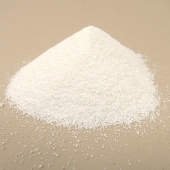[quote=Thekla McDaniels]I was once served pasta cooked with baking soda, or so they said later. The pasta was quite soapy tasting, leading me to wonder 30 some years later if it was really baking soda that was accidentally put in the pasta. There were 30 of us eating meals together, and pretty much everyone left the pasta un eaten. Later fresh pasta was supplied, but we had finished our dinners and we had another class to go to. There was some discussion about the soapy noodles, but the course we were taking was a lot more interesting than someone’s mistake….
But how come those noodles were so soapy?
I did a little internet searching and found recipes for home made ramen that said baking soda in the pasta water made them chewy like ramen. And some discussion about adding washing soda instead of baking soda too. But apparently baking the baking soda changes the chemical make up of the molecule, or do I call it a crystal? I don’t know, but you end up with the identical chemical formula as washing soda. It drives a hydrogen off. But the warning was not to use washing soda in food because the manufacturing process is different for food grade “washing soda” than non food grade washing soda and impurities are allowed in washing soda that are not allowed in food grade products.
When I have nixtamalized corn with baking soda, slipped the seed coat and rinsed well, it still had a hint of soap.
I don’t mean to draw the thread off topic here by any means. I was confused by the suggestion of using washing soda to cook noodles. Did some research and I remain confused. I wanted to add a note of caution alongside the idea of eating washing soda.[/quote]
From the recipes I've seen, when they use baking soda they heat it first, which changes it to washing soda. And good point to use food grade sodium carbonate.









